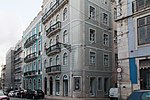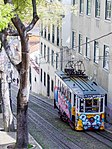Igreja de São Roque

The Igreja de São Roque (Church of Saint Roch) is a Roman Catholic church in Lisbon, Portugal. It was the earliest Jesuit church in the Portuguese world, and one of the first Jesuit churches anywhere. The edifice served as the Society's home church in Portugal for over 200 years, before the Jesuits were expelled from that country. After the 1755 Lisbon earthquake, the church and its ancillary residence were given to the Lisbon Holy House of Mercy to replace their church and headquarters which had been destroyed. It remains a part of the Holy House of Mercy today, one of its many heritage buildings. The Igreja de São Roque was one of the few buildings in Lisbon to survive the earthquake relatively unscathed. When built in the 16th century it was the first Jesuit church designed in the “auditorium-church” style specifically for preaching. It contains a number of chapels, most in the Baroque style of the early 17th century. The most notable chapel is the 18th-century Chapel of St. John the Baptist (Capela de São João Baptista), a project by Nicola Salvi and Luigi Vanvitelli constructed in Rome of many precious stones and disassembled, shipped, and reconstructed in São Roque; at the time it was reportedly the most expensive chapel in Europe.
Excerpt from the Wikipedia article Igreja de São Roque (License: CC BY-SA 3.0, Authors, Images).Igreja de São Roque
Largo Trindade Coelho, Lisbon Misericórdia (Misericórdia)
Geographical coordinates (GPS) Address Website External links Nearby Places Show on map
Geographical coordinates (GPS)
| Latitude | Longitude |
|---|---|
| N 38.713611111111 ° | E -9.1436111111111 ° |
Address
Museu-Igreja de São Roque (Igreja de São Roque;Museu de São Roque)
Largo Trindade Coelho
1200-470 Lisbon, Misericórdia (Misericórdia)
Portugal
Open on Google Maps








